**”The Perfect Fit: A Comprehensive Guide to Tightening Your Dog’s Collar Safely”**
** Introduction :- how to tighten dog collar **
Making sure your dog’s collar fits properly isn’t just a matter of comfort; This is essential for their safety and well-being. Whether you have a playful puppy or an experienced companion, knowing how to properly tighten a dog collar can prevent accidents and ensure that your furry friend feels safe. A collar that is too loose may slip, putting your dog at risk of getting lost, while a collar that is too tight may cause discomfort or even injury.
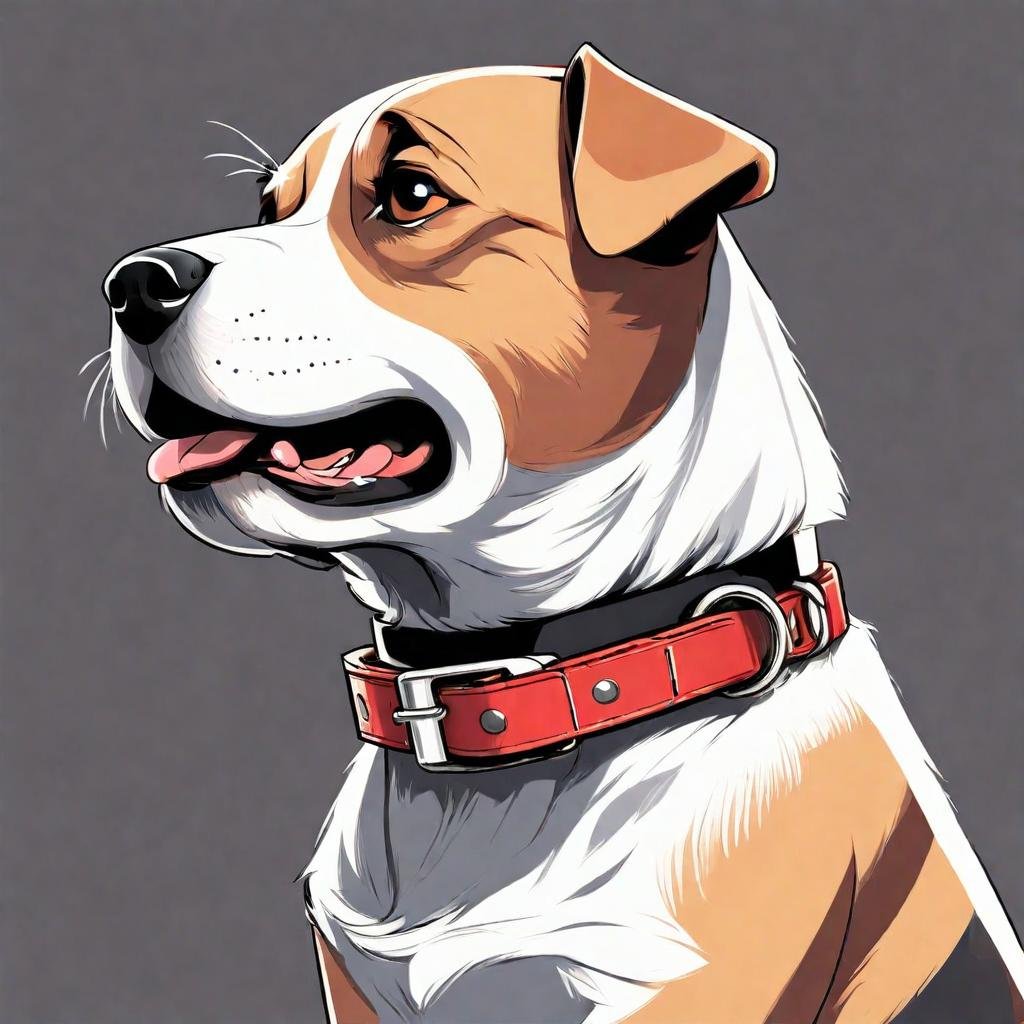
Table of Contents
In this guide, we’ll walk you through the simple steps to get the right fit for your dog’s collar. We’ll cover everything from measuring your dog’s neck to adjusting different types of collars, making sure you have all the information you need to keep your pet happy and safe. No longer need to worry about whether your dog’s collar is too tight or too loose; By the end of this post, you’ll be a pro at finding that sweet spot.
So, if you have ever wondered how to tighten a dog’s collar correctly, you are in the right place. Let’s dive in and make sure your four-legged friend is both comfortable and safe no matter where your adventures take you.
Why Proper Fit Matters ;
A properly fitted dog collar is important for many reasons, and it’s not just about comfort – it’s about safety and peace of mind. Knowing how to tighten a dog collar correctly ensures that your pet is safe without any harm or discomfort.
A loose collar can easily slip off, leading to the scary possibility of your dog running away and getting lost or stuck in dangerous situations. On the other hand, a collar that is too tight can cause skin irritation, difficulty breathing, and general discomfort, leaving your dog unhappy.
A well-fitting collar allows you to have better control during walks and walks, reducing the risk of your dog breaking away or running away. It also ensures that any identification tags or contact information always remains with your pet, increasing the chances of quick reunion if they ever get lost.
Understanding how to properly tighten a dog collar balances safety and comfort, giving your dog the care and attention they deserve. Whether you’re a new pet owner or a seasoned dog lover, ensuring the right fit is a small step that makes a big difference in your dog’s everyday life.
Types of Dog Collars ;
Understanding the different types of dog collars can help you choose the best option for your furry friend. Knowing how to properly tighten a dog collar will depend on the type you choose.
1. Flat Collars

Flat collars are the most common and versatile type, suitable for everyday use. They come with a buckle or snap closure and often have a ring to attach an ID tag and a strap. These collars are easy to adjust, making them easy to tighten or loosen as needed.
2. Martingale Collars
Martingale collars are ideal for dogs who tend to slip out of their collars. They tighten slightly when the dog pulls, allowing more control without suffocation. This design ensures a comfortable fit, which is essential for safety and comfort.
3. Harnesses
Harnesses are a great alternative to collars, especially for dogs who have neck problems or who have pulling problems. They distribute pressure evenly across the chest and back, reducing strain on the neck. Adjusting the harness correctly is just as important as knowing how to tighten the dog’s collar to ensure it fits securely.
4. Specialty Collars
Special collars with GPS tracking or training features provide additional benefits. These collars may require specific adjustments to function properly while providing comfort and safety.
Each type of collar serves a different purpose, and knowing how to properly tighten a dog collar for each can increase your dog’s overall well-being.
Choosing the Right Collar Size ;
Selecting the correct collar size for your dog is important for their safety and comfort. To start, measure your dog’s neck using a flexible tape measure or piece of string, then add about two inches to make sure the collar isn’t too tight. This measurement is your guide to choosing a collar that fits well.

When learning how to tighten a dog collar, it’s important to apply the two-finger rule: You should be able to comfortably insert two fingers between the collar and your dog’s neck. This ensures that the collar is comfortable but not constricting. Different materials like nylon or leather can have different degrees of flexibility, so consider the material of the collar when adjusting it.
Puppies and growing dogs require frequent size checks and adjustments. For these active pups, adjustable collars that can grow with them are a great option. For adult dogs, it is still important to check the fit periodically, especially if their weight fluctuates.
Selecting the correct collar size and knowing how to properly tighten a dog collar can prevent accidents and ensure that your furry friend is both comfortable and safe. A well-fitting collar is a small but important part of responsible pet ownership.
Steps to Tighten a Dog Collar Properly ;
The correct fit of your dog’s collar is essential for their safety and comfort. Here’s a simple guide on how to tighten a dog collar correctly.
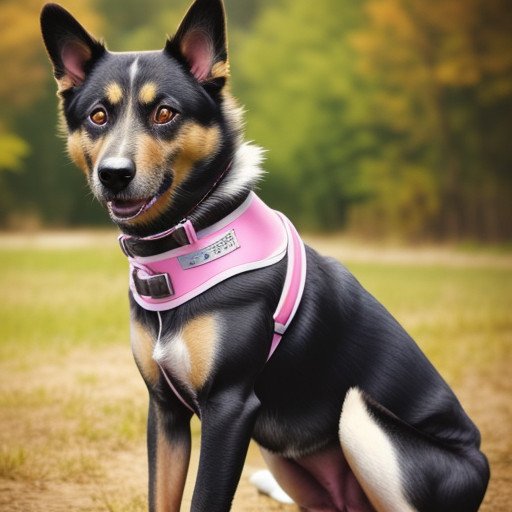
1. Measure your dog’s neck :
Start by measuring your dog’s neck with a flexible tape measure. Add about two inches to this measurement to make sure the collar is not too tight.
2. Place the collar :
on your dog’s neck and fasten it. Make sure the collar sits comfortably in the middle of the neck, not too high or too low.
3. Apply the Two-Finger Rule :
After fastening the collar, insert two fingers between the collar and your dog’s neck. If your fingers fit comfortably, the collar is tight enough. If you can’t fit your fingers, the collar is too tight; If there is too much space, it is too loose.
4. Adjust accordingly :
Most collars have adjustable buckles or slides. Adjust these to tighten or loosen the collar as needed, then double-check with the two-finger rule.
5. Double check:
Pull the collar gently to make sure it is secure but not restrictive. Check the fit regularly, especially if your dog is growing or has gained or lost weight.
By following these steps, you can master how to tighten a dog collar, ensuring that your pet remains safe and comfortable on all of your adventures.
Signs of an Improperly Fitted Collar ;
Knowing how to properly tighten a dog collar is key to your dog’s comfort and safety. But how can you tell if a collar doesn’t fit correctly? Here are some signs to look for:
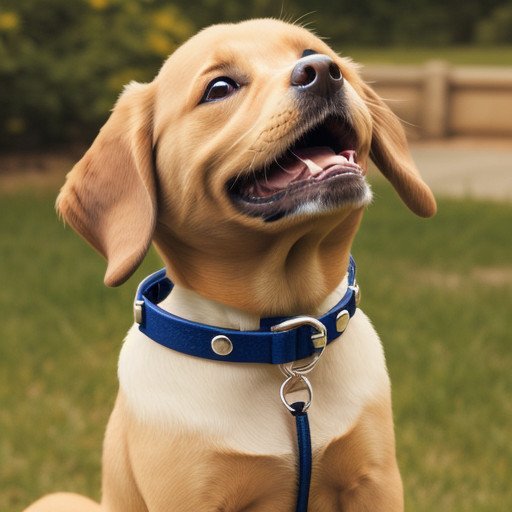
1. Red Marks or Irritation :
If you notice red marks, irritation, or hair loss around your dog’s neck, the collar may be too tight. This can cause discomfort and even skin infection.
2. Slipping Out of Collar :
If your dog’s collar easily slips off over his head, it is too loose. This can be dangerous, especially during walks or outdoor activities, as your dog may escape.
3. Difficulty breathing or coughing :
A collar that is too tight can restrict your dog’s breathing. If your dog is coughing, panting, or showing signs of difficulty breathing, the collar needs to be loosened immediately.
4. Constant Scratching or Pawing :
Frequent scratching or pawing at the collar area can indicate that the collar is too tight or causing discomfort.
5. Uneven Fit :
An unevenly fitted collar, which might be tighter on one side than the other, can cause discomfort and skin problems. Ensure the collar is evenly tightened all around.
Regular checks and adjustments, based on how correctly the dog collar is tightened, can prevent these problems and keep your dog comfortable and safe. Always monitor your dog’s reactions to the collar and adjust as necessary to ensure proper fit.
Regular Maintenance and Checks ;
Keeping your dog’s collar in good condition and ensuring it fits properly requires regular maintenance and checks. Here’s how to stay on top of it and why it matters.
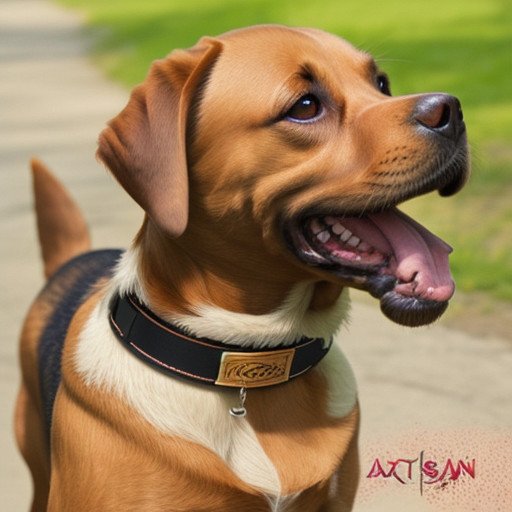
1. Weekly Fit Check ;
Each week, take some time to check the fit of your dog’s collar. Use the two-finger rule: You should be able to comfortably slide two fingers between the collar and your dog’s neck. If it is too tight or too loose, adjust accordingly. Knowing how to properly tighten a dog collar is key to your pet’s comfort and safety.
2. Inspect for wear and tear :
Regularly inspect the collar for signs of wear and tear. Look for frayed edges, weak stitching, or damaged buckles. A worn-out collar can break easily, putting your dog at risk for escape or injury.
3. Clean the collar :
Dirt and oil from your dog’s coat can accumulate on the collar, making it dirty and potentially irritating your dog’s skin. Wash the collar with mild soap and water as needed, making sure it has dried thoroughly before wearing it back on.
4. Adjust for growth or weight changes :
If your dog is still growing or has experienced changes in his weight, you will need to adjust the collar more often. Puppies, in particular, need regular adjustments to accommodate their rapid growth.
By incorporating these simple maintenance routines, you can ensure that your dog’s collar remains safe, comfortable, and effective. Paying regular attention to how to tighten a dog’s collar correctly will keep your furry friend happy and safe.
Special Considerations ;
When it comes to tightening a dog collar, there are certain things to keep in mind to ensure your dog’s comfort and safety.
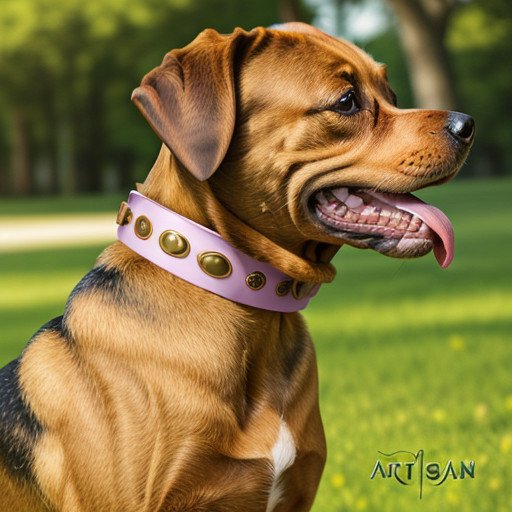
1. Puppies and Growth:
Puppies grow rapidly, so their collars may require frequent adjustments. Make sure the collar is comfortable but not tight, to allow room for growth.
2. Dogs with sensitive skin:
Some dogs have sensitive skin that may be irritated by some of the collar’s materials. Choose soft materials like nylon or padded collars to minimize discomfort.
3. Long-haired Breeds:
Collars can easily get lost in long hair, making it challenging to check and adjust the fit. Regularly part the fur to inspect the collar and make sure it is not too loose or tight.
4. Training collars:
Collars used for training, such as martingale or choke collars, require careful adjustment. Follow the specific guidelines for these collars to ensure they work safely and effectively without causing any harm.
5. Activities and Environment:
Consider the activities your dog engages in and the environment they are in. For example, a comfortable fit may be needed during walks or outdoor adventures to prevent slipping out.
By understanding these special considerations and how to properly tighten a dog collar, you can provide your dog with a collar that fits well and increases their safety and comfort in a variety of situations.
** Conclusion **
Mastering how to properly tighten a dog collar isn’t just about making sure your pet looks good – it’s about their safety and well-being. By following simple guidelines and regularly checking the fit, you can provide your dog with a collar that is both comfortable and safe.
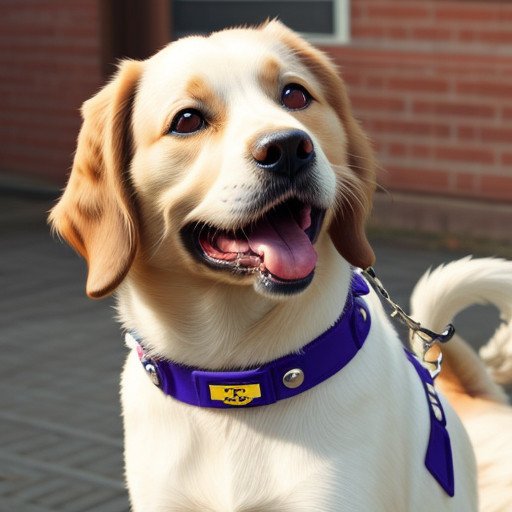
Always remember the two-finger rule: You should be able to comfortably slide two fingers between the collar and your dog’s neck. This ensures that the collar is comfortable enough to stay in place without causing any discomfort or restriction.
Regular maintenance, such as weekly fit checks and cleaning, keeps the collar in good condition and prevents potential problems such as irritation or slipping. Adjust the collar as needed, especially for growing puppies or dogs with weight fluctuations.
It is also important to choose the right collar size and type based on your dog’s needs and activities. Whether it’s a flat collar for everyday walks or a martingale collar for training, each serves a specific purpose in keeping your dog safe and comfortable.
By incorporating these practices into your daily routine, you demonstrate your commitment to your dog’s health and happiness. A well-fitting collar is a small but important part of responsible pet ownership, ensuring that your furry friend can enjoy every moment with you.
Additional Resources ;
For more guidance on how to properly tighten a dog collar and increase your dog’s comfort and safety, explore these valuable resources:
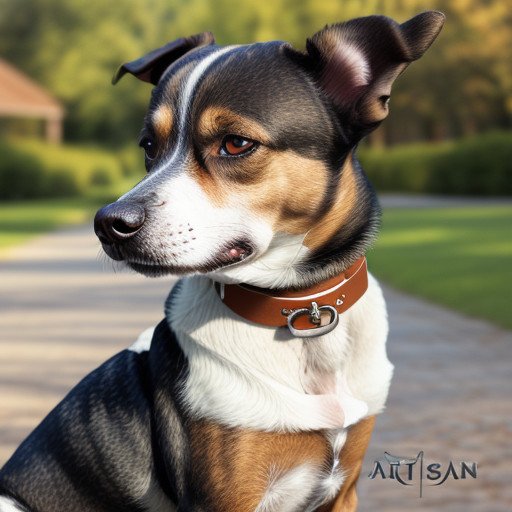
1. Video Tutorials:
Visual guides can be incredibly helpful. Find videos demonstrating specific collar fitting techniques and adjustments for different collar types.
2. Online Guides and Articles:
Many reputable websites and blogs provide detailed articles on the fitting and maintenance of dog collars. Look for reliable sources that provide step-by-step instructions and tips.
3. Pet supply stores:
Visit your local pet supply store and talk to the knowledgeable staff. They can demonstrate collar fitting techniques and recommend the appropriate collar based on your dog’s breed and size.
4. Professional Trainer or Veterinarian:
Consult a professional trainer or veterinarian for personalized advice. They can assess your dog’s specific needs and recommend the best collar type and fit for his health and behavior.
5. Manufacturer’s Guidelines:
Refer to the manufacturer’s instructions that come with the collar. They often include specific recommendations for adjusting and maintaining the collar for optimal performance.
By exploring these resources, you can deepen your understanding of how to properly tighten a dog collar and ensure that your dog’s collar fits securely and comfortably in a variety of situations. Remember, a well-fitting collar contributes to your dog’s overall well-being and safety during daily activities.
You might be interested in reading this post as well Custom Dog Collar
**”The Perfect Fit: A Comprehensive Guide to Tightening Your Dog’s Collar Safely”** ** Introduction :- how to tighten dog collar ** Making sure your dog’s collar fits properly isn’t just a matter of comfort; This is essential for their safety and well-being. Whether you have a playful puppy or an experienced companion, knowing how to…
You can read this posthttps://tomeshnews.co.in/bg3-dog-collar/?amp=1
How do I know if my dog’s collar is too tight?

Use the two-finger rule: you should be able to fit two fingers comfortably between the collar and your dog’s neck. If it’s too tight, loosen it to avoid discomfort.
What should I do if my dog keeps slipping out of their collar?

Consider using a martingale collar, which tightens slightly when pulled, or ensure your current collar is properly adjusted to prevent slipping.
How often should I check my dog’s collar fit?

Check the collar fit weekly, especially for puppies or dogs that are still growing. Adjust as needed to accommodate changes in size.
Can a collar be too loose?

Yes, a collar that’s too loose can slip off or get caught on objects, posing a risk to your dog’s safety. Ensure it’s snug but not tight.
What should I do if my dog’s collar causes irritation?

Switch to a collar made from softer materials like nylon or consider using a harness instead. Ensure the collar is clean and properly fitted.
